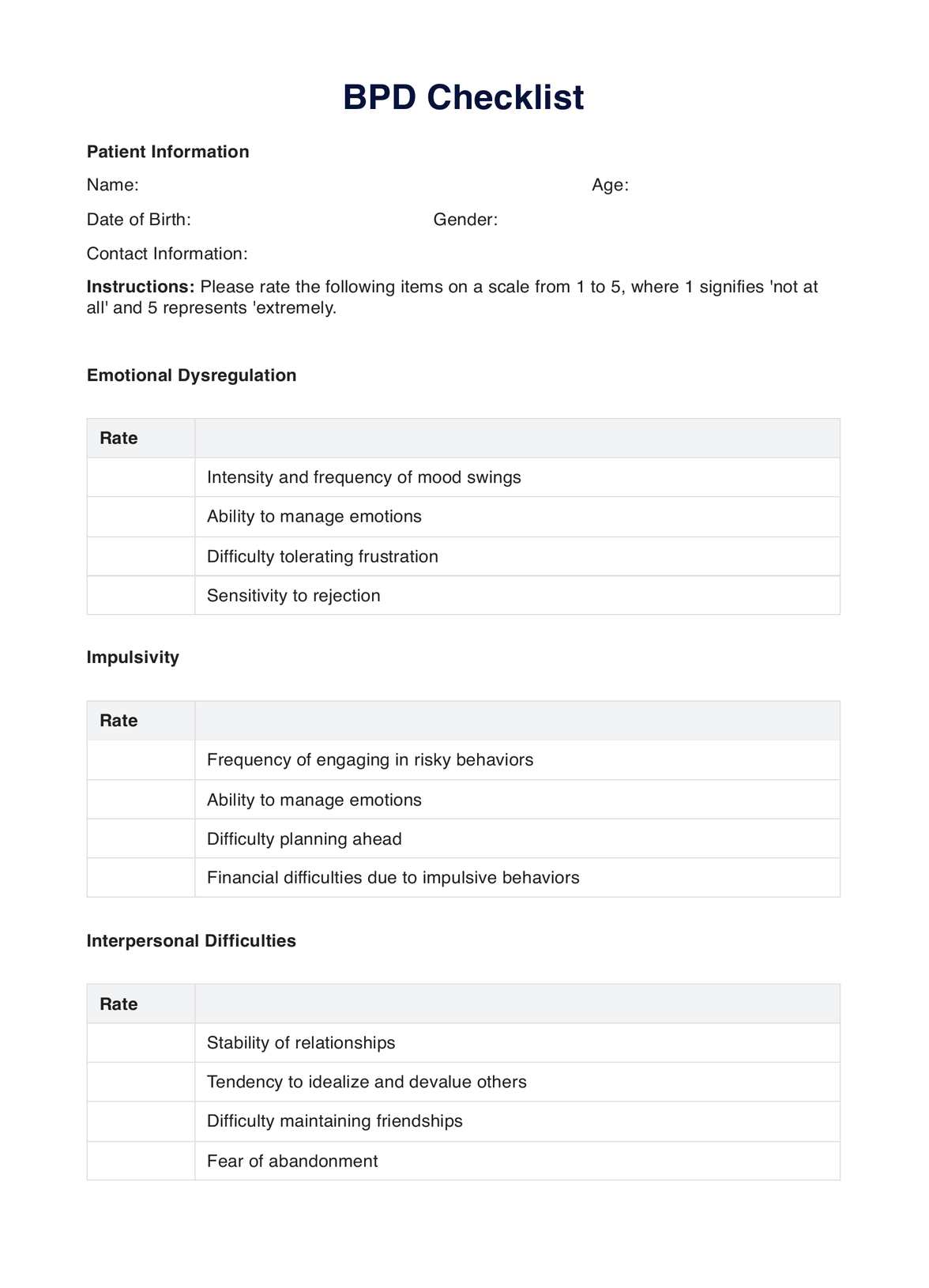Carepatron has a ready-to-download and use BPD checklist template for your convenience.

Borderline Personality Disorder (BPD) Checklist
Streamline your Borderline Personality Disorder management with our comprehensive BPD Checklist Template for organized and effective tracking of tasks and goals.
Use Template
Borderline Personality Disorder (BPD) Checklist Template
Commonly asked questions
BPD Checklists are used when healthcare professionals need to systematically assess and monitor the symptoms of borderline personality disorder
Healthcare professionals use BPD Checklists to evaluate various aspects of BPD, including emotional dysregulation, impulsivity, interpersonal difficulties, and self-image disturbances.
EHR and practice management software
Get started for free
*No credit card required
Free
$0/usd
Unlimited clients
Telehealth
1GB of storage
Client portal text
Automated billing and online payments











